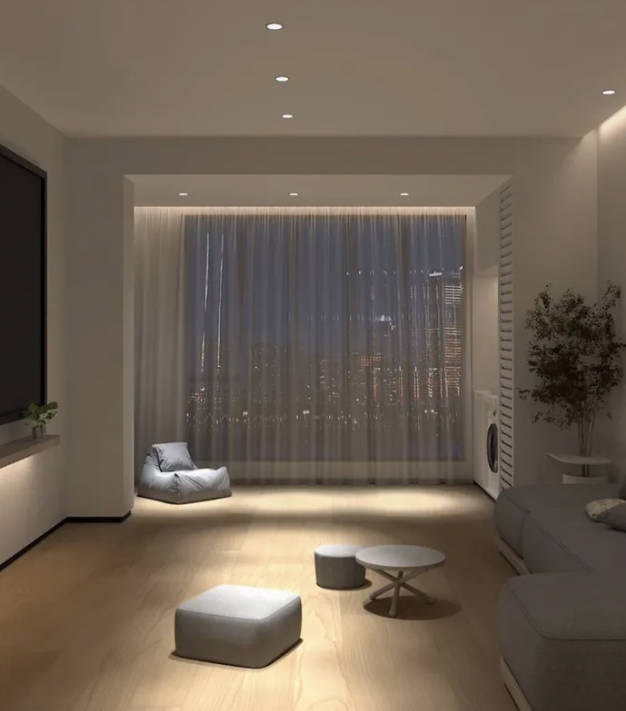There are not many decorative components in downlights. It depends more on the lighting.
As long as it is a qualified lamp, it is difficult to distinguish the quality of the light source with the naked eye (except for those who have higher requirements for lighting).
The color rendering index is so obvious to the naked eye. I can’t do it, I can do the P picture.

so:
How to use downlights is an intuitive feeling, and downlights with excellent light source quality are the icing on the cake.
Introducing three common types of downlights to you! (Based on the use of light sources, not classified by installation methods)
No1/——The simplest lighting function
No2/——Downlight that solves the problem of light pattern
No3/—— Downlight that solves the problem of dull ceiling and reduces contrast glare
No1/——The simplest lighting function
The most common one is flood downlight, the beam angle is usually >100°.
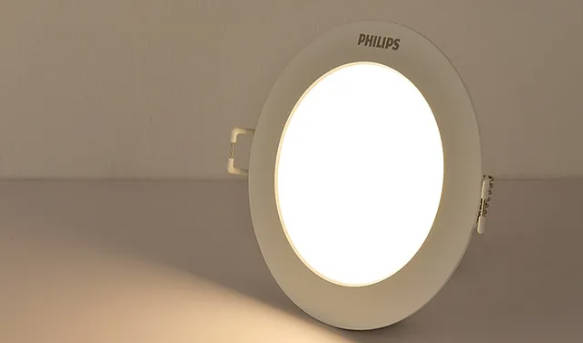
The function of this downlight is very simple, it is to illuminate the space.
Precautions for use: Keep the distance from the wall at 40-60cm. If it is too close, it will look like the picture above before modification.
Let me give you some examples of models in different price ranges of various brands that are more worth buying. See the review article for details.
No2/——Downlight that solves the problem of light pattern
In home lighting, there are many restrictions. The opening will be relatively close to the wall. A distance of ten or twenty centimeters from the wall is normal.
In order to remove the balloon in the picture below from the wall, I don’t want to install spotlights.
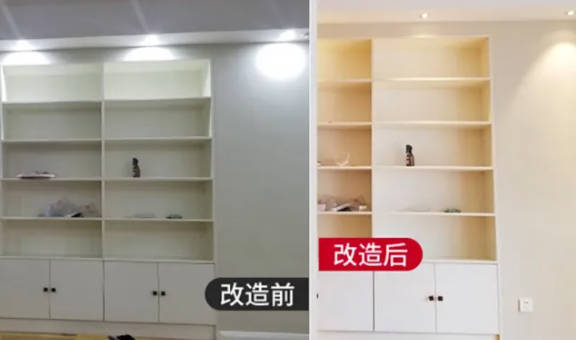
Then downlights with small beam angles come in handy, the most common ones are 50-70° downlights.
Precautions for use:
- There are no specific requirements for the distance between the opening and the wall.
- When doing basic space lighting, try to have other light sources on the ceiling. It will be more obvious when the sky is dark and the ground is bright, and you will feel the depressive feeling of the center of gravity of the space moving downwards. Just like the picture below

No3/—— Downlight that solves the problem of dull ceiling and reduces contrast glare
When doing lighting without a main light, people often like to use downlights as basic lighting. This approach is really not recommended. It is nothing more than dividing a ceiling light into N small ceiling lights.
But everyone has overlooked a problem. The diffusion of conventional downlight sources is not as good as that of ceiling lamps, so the light will not be too soft. Since the light-emitting surface of the downlight is small, the brightness of the diffused acrylic plate will naturally be high, and there will also be a certain amount of glare. .
If you do this and it cannot be changed, you can use light fixtures to do some remediation.
For example, like this
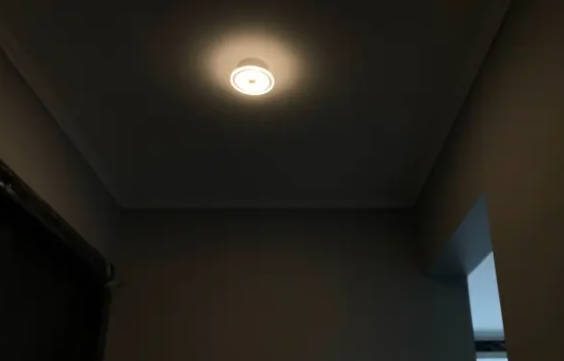
Many manufacturers are making light guide plate downlights, including Opple and Panasonic. Those with a high budget can choose Berman. In terms of installation methods, there are embedded ones and surface-mounted ones.
Whole house lighting arrangement
If you are renovating or are about to renovate, please keep the following article. So far, it is a very comprehensive lighting application database on the entire site, which roughly includes:
Lighting layout ideas, misunderstandings, precautions, specific implementation details, and lighting arrangements for each space, more than 100,000 words of pure dry information, all updates are included in the navigation article on the link, and will continue to be updated…
How to identify the quality of downlights?
As far as the feeling of holding it in the hand is concerned, most good-quality downlights are made of metal casings, are well made, feel textured, and are relatively weighty. But these are not visible after installation.
Because the downlight has a simple shape and no personalization in appearance, and when the downlight is installed, it has generally been embedded in the ceiling, and only a frame can be seen. Even with some frameless downlights or narrow frame downlights, little or even this can be seen. In addition, deep anti-glare is used to achieve the effect of not being able to see the light.
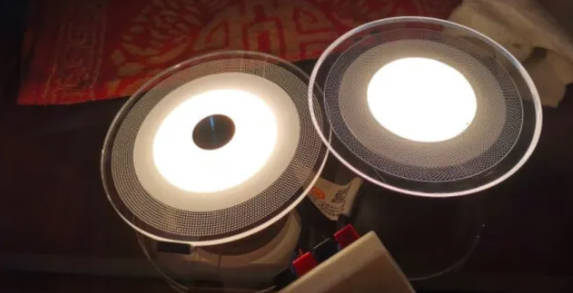
Therefore, the difference in downlights still depends on the optical quality. Downlights with better optical quality will, of course, be less expensive.
A simple way is to look at the comfort of downlight light. The most fundamental thing about good light is that it makes people feel comfortable and the things it illuminates feel natural. The same white light, some lights feel comfortable, while others feel dazzling and bleak. Of course, this may be due to poor anti-glare treatment, unreasonable spectral distribution, or even negative red light color rendering index.
For higher-level requirements, you can also look at the light shape, that is, the light output effect. See whether it can show the effect of stronger light intensity in the center and the halo gradually fading out, and whether the light spots of several downlights can be compared in transition. Naturally etc.
This downlight with the comfort light logo meets these basic requirements.




